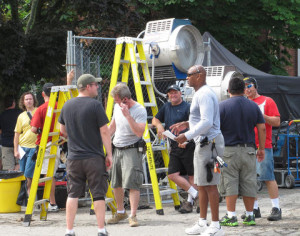Just because you can hit a tennis ball, doesn’t mean you can win a game.
Many of us weekend warriors know that our brilliant rallies with the backboard, don’t always translate to a stunning performance on the court. The same is true in our organizations; having the skills and knowledge (competence) for agility does not necessarily mean that you and your organization have the ability to put it into action in the midst of volatile, uncertain, complex and ambiguous (VUCA) situations (Stiehm and Townsend, 2002).
For an organization to be truly agile it must develop the capacity at all levels of the system to enhance and sustain agility. Leaders can assess their systems, processes and frameworks for their current capacity for agility, and enhance them for maximum responsiveness. Here are a few places to start, along with some provocative questions to ask:
- Systems and processes to convene a team of experts to respond effectively to an unexpected event or opportunity. Does your organization have a strategy to use existing technology to easily search for and assemble people based on their expertise and experience?
- Systems and processes that enable agile communication and collaboration. Do you have the capability to swiftly communicate with the right stakeholders in the midst of a fluid situation and/or high priority collaboration
- Frameworks to quickly develop new products and services (Rapid prototyping). Do your employees across job functions and business units know where to take a new product or service idea and how to move it smoothly from inception to execution? Does your organization have the capacity to rapidly prototype a new product or service in response to an emerging need or opportunity?
- Streamlined organizational structure and decision-making processes. Research shows that organizations that have minimal structure necessary for their specific business are more able to improvise (Moorman & Miner, 1998). Does your organizational structure and decision-making process enhance or impede agility?
With systems and processes that enable rather than impede responsiveness, organizations have a foundation for agility. This “agile infrastructure” alone will not insure individuals, teams and the entire organizational system is agile, only that the infrastructure will not be part of the problem. Organizations that are confident that all of their employees can and will respond effectively to the unexpected and unplanned also invest in developing, reinforcing and rewarding individual and team capacity to improvise to meet the changing needs of the business and its customers.
Moorman, C., & Miner, A. S. (1998). Organizational improvisation and organizational memory. Academy of Management Review, 23(4), 698-723.
Stiehm, Judith Hicks, & Townsend, Nicholas W. (2002). The U.S. Army War College: Military education in a democracy. Philadelphia: Temple University Press.
This post by Pamela Meyer originally appeared on meyercreativity.com/blog



